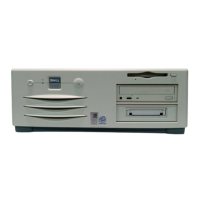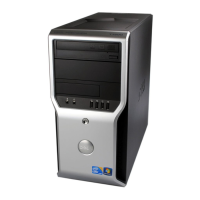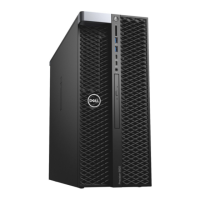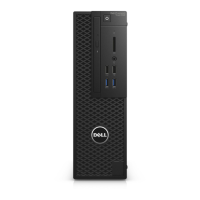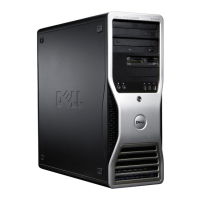160 Microprocessor
www.dell.com | support.dell.com
Installation Guidelines
• Your computer is designed for dual-processor operations. The heat sinks (CPU_0 and
CPU_1) are keyed to fit their specific connector.
• For single-processor operations, the processor must be installed in socket CPU_0. The
VRM for the single processor is already installed and cannot be removed. Processor
socket 1 and VRM connector 1 must be empty. To locate these components, see the
system board components illustration (for the Dell Precision 450 computer, see
"System Board Components" or for the Dell Precision 650 computer, see "System
Board Components") or the system board label inside your computer.
• For dual-processor operations, both processor sockets and the VRM connector must be
populated. To locate the VRM connector, see the system board components
illustration (for the Dell Precision 450 computer, see "System Board Components" or
for the Dell Precision 650 computer, see "System Board Components")or the system
board label inside your computer.
• For dual-processor operations, the two processors and the VRMs must be identical. If
the processors do not match, you receive a system message. If the processors voltage
don’t match or the VRM is not properly installed, the diagnostic lights indicate an
error..
• If you are upgrading your microprocessor, keep your original microprocessor heat sink
and securing clips for future troubleshooting.
Installing the Microprocessor
CAUTION: The processor can get very hot during normal operation. Ensure that
the processor has had sufficient time to cool before you touch it.
CAUTION: Before you perform this procedure, follow the safety instructions in
the
System Information Guide
.
1
Shut down the computer through the Start menu.
2 Ensure that your computer and attached devices are turned off. If your computer and
attached devices did not automatically turn off when you shut down your computer,
turn them off now.
NOTICE: To disconnect a network cable, first unplug the cable from your computer and then
unplug it from the network wall jack.
3
Disconnect any telephone or telecommunication lines from the computer.
4 Disconnect your computer and all attached devices from electrical outlets, and then
press the power button to ground the system board.

